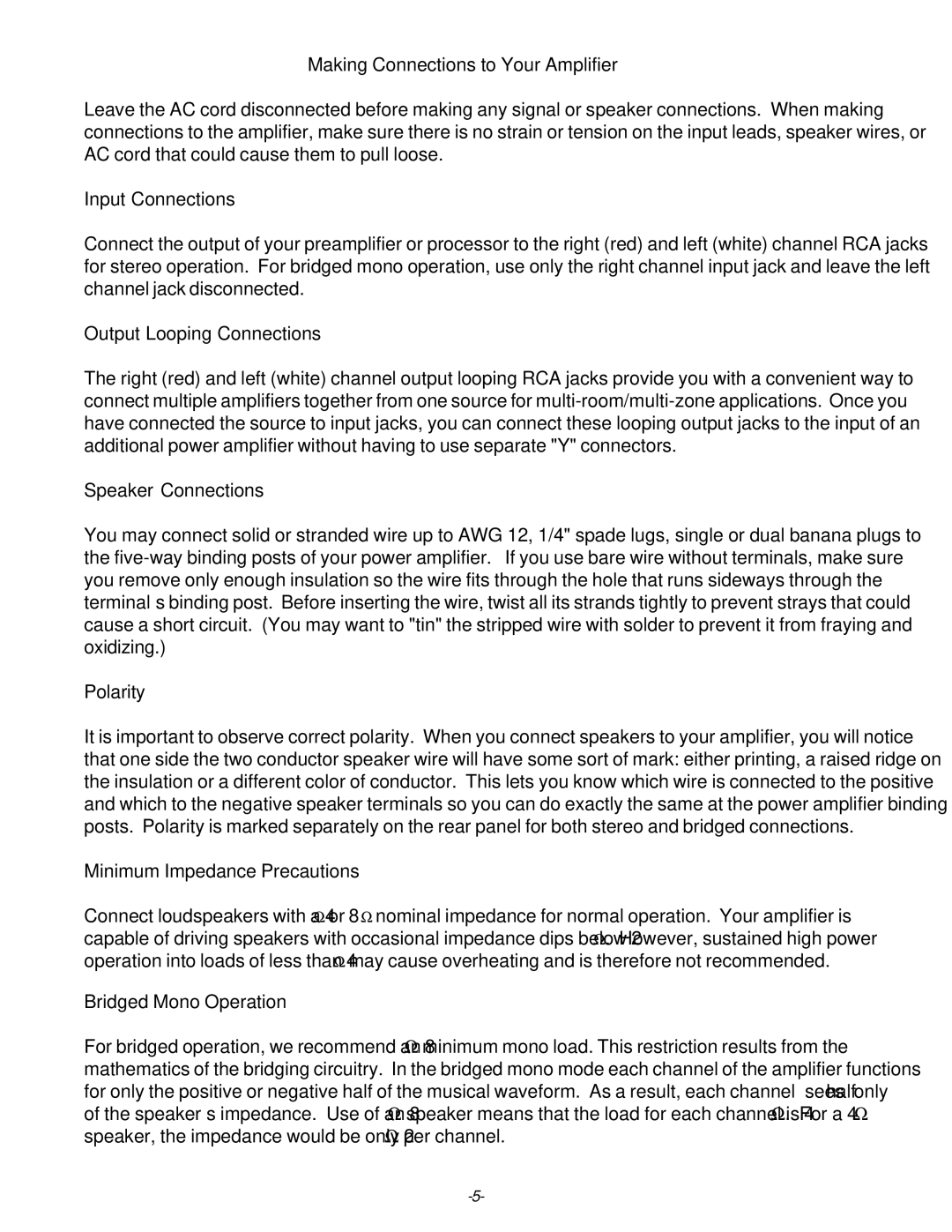HCA-1500A specifications
The Parasound HCA-1500A is a highly regarded power amplifier that has earned a reputation for delivering exceptional audio performance at an affordable price. This robust amplifier is particularly popular among audiophiles and home theater enthusiasts for its excellent build quality, advanced technology, and impressive sound reproduction capabilities.One of the standout features of the HCA-1500A is its power output. It delivers 150 watts per channel into 8 ohms and up to 225 watts per channel into 4 ohms, ensuring that it can drive a wide range of speakers with ease. This level of power makes it suitable for both stereo and multi-channel setups, allowing for a versatile listening experience. The amplifier's high current capability is particularly noteworthy, providing the necessary muscle to handle transient peaks and dynamic musical passages without distortion.
The HCA-1500A employs a fully discrete output stage, which helps minimize signal distortion and enhances sonic clarity. This architecture is complemented by high-quality components, including a toroidal transformer and large filter capacitors, which contribute to its impressive performance. The use of a toroidal transformer not only helps to keep the amplifier compact but also reduces electromagnetic interference, leading to cleaner sound reproduction.
In addition to its impressive technical specifications, the HCA-1500A features a user-friendly design. The rear panel includes a variety of input options, including RCA and XLR connections, allowing for flexibility in connecting different audio sources. Its robust construction, with a heavy-duty chassis and professional-grade binding posts, ensures durability and reliability over time.
Another key characteristic of the HCA-1500A is its thermal management system. The amplifier is designed with ample ventilation and heat sinks to dissipate heat efficiently, allowing for sustained performance even during extended listening sessions. This attention to thermal design ensures that the amplifier remains cool and operates within its optimal performance range.
Overall, the Parasound HCA-1500A stands out as a powerful, reliable, and sonically rich amplifier. Its combination of high power output, discrete circuitry, and thoughtful engineering make it a compelling choice for anyone seeking to enhance their audio system's performance. Whether used in a dedicated home theater or a high-fidelity music setup, the HCA-1500A is sure to impress with its ability to deliver a dynamic and immersive listening experience.
